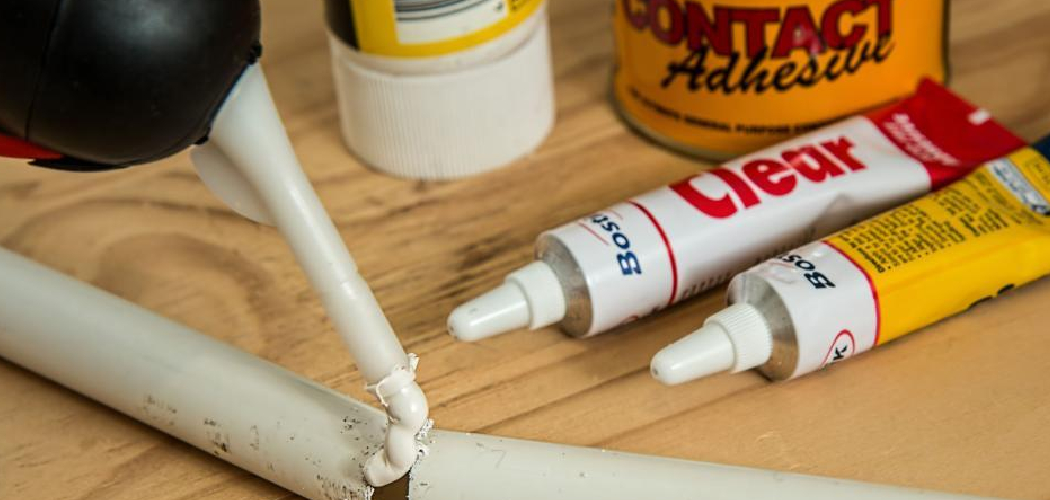Cutting PVC pipe in tight spaces can be a challenging task, especially when standard tools and methods are difficult to use. Whether you’re working on a plumbing repair or a DIY project, knowing the right techniques and tools can make the job much easier and more efficient. This guide will provide practical tips for how to cut pvc pipe in tight spaces for Achieving a clean and precise cut.
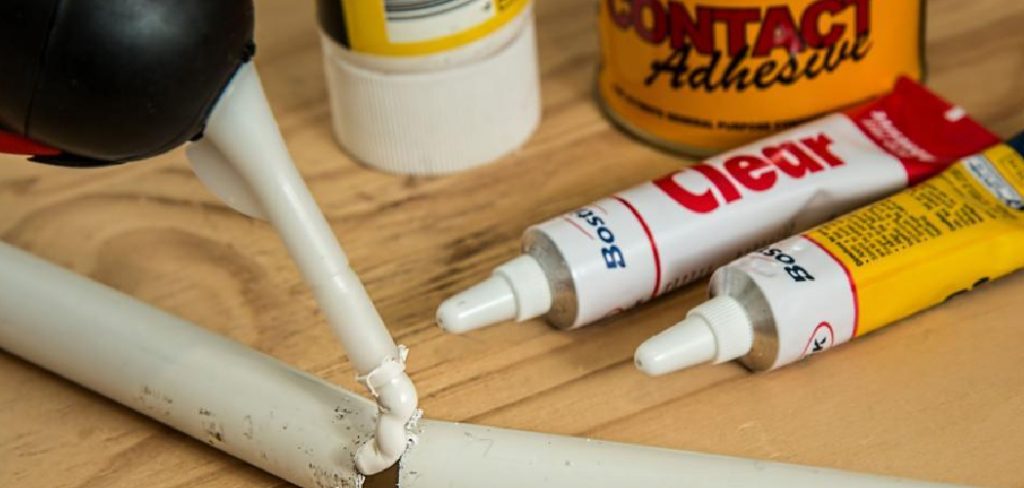
Importance of Using the Right Tools
Using the right tools is crucial when cutting PVC pipe, especially in tight spaces. The appropriate tools not only ensure a clean and accurate cut but also help you complete the job safely and efficiently. For instance, tools like a PVC cutter, hacksaw, or even a rotary tool are designed specifically for cutting materials like PVC and can minimize the risk of cracking or uneven edges.
Additionally, the right tools can save valuable time by reducing the effort required to maneuver in confined areas, making the task far less frustrating. Investing in proper equipment tailored to the job at hand ultimately provides better results and extends the lifespan of your pipework.
Necessary Tools Required
When cutting PVC pipe in tight spaces, having the right tools on hand is essential to achieve a clean and precise cut. Below is a list of necessary tools you will need for the task:
- PVC Pipe Cutter – A ratcheting or scissor-style PVC cutter provides a clean cut with minimal effort and works well in confined spaces.
- Hacksaw – A versatile tool that can be used for cutting PVC pipe when a pipe cutter is not available. Ensure to use a fine-tooth blade for the best results.
- Wire Saw – Ideal for extremely tight spaces, a wire saw is flexible and can fit where other tools cannot.
- Rotary Tool – With the appropriate cutting accessories, this tool offers precision and is excellent for detailed work in cramped areas.
- Measuring Tape and Marker – Ensure accurate measurements and mark the pipe precisely where the cut is required.
- Deburring Tool or Sandpaper – Used to smooth out rough edges after cutting to ensure a proper fit for connectors and fittings.
Having these tools prepared will make the cutting process faster, safer, and more efficient, even in challenging working conditions.
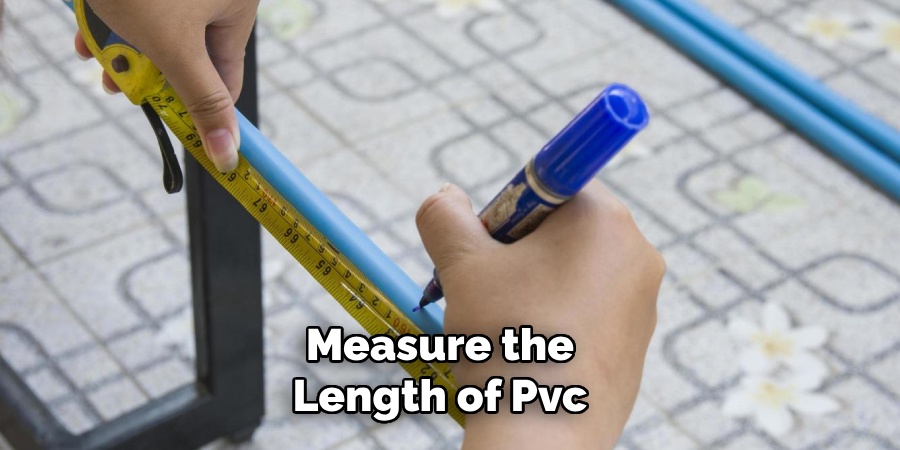
Preparing for the Cut
Before starting the cutting process, proper preparation is key to achieving accurate and clean results, especially in tight spaces. Begin by ensuring the workspace is clear of any obstructions and well-lit to improve visibility. Measure the length of PVC pipe you need to cut using a measuring tape and mark the cutting point clearly with a marker. Double-check your measurements to avoid errors, as precise cuts are critical for a proper fit.
Next, secure the PVC pipe to prevent it from moving during the cut. If space allows, use a clamp or a vice to hold the pipe in place, but make sure not to overtighten, as this could damage the pipe.
For very tight spaces, position the pipe in a way that gives you enough access to safely operate the cutting tool of your choice. Lastly, wear appropriate safety gear, including safety goggles and gloves, to protect yourself from flying debris and sharp edges. Proper preparation will make the cutting process smoother and more efficient.
10 Methods How to Cut Pvc Pipe in Tight Spaces
1. Using a PVC Cable Saw
A PVC cable saw is a flexible and portable tool ideal for cutting pipes in tight spaces. Made of a thin, braided wire, it can easily maneuver around obstacles.
To use, loop the cable around the pipe, position it where you want to cut, and pull the handles back and forth to saw through the pipe. This method is particularly effective in areas where larger tools cannot fit, though it may take some effort to achieve a clean cut.
2. Employing a Compact Pipe Cutter
Compact pipe cutters are designed specifically for cutting PVC in confined areas. These small, hand-held tools grip the pipe and feature a sharp cutting wheel that slices through as you rotate the cutter around the pipe.
Their compact size allows for easy maneuverability in tight spots. Ensure that the pipe is steady and apply consistent pressure while rotating to avoid uneven cuts.
3. Using a Reciprocating Saw with a Short Blade
A reciprocating saw equipped with a short, fine-toothed blade is a powerful option for cutting PVC in tight spaces. The short blade minimizes the risk of hitting nearby objects while providing precise cuts.
Secure the pipe firmly and guide the saw carefully along the marked line to prevent slipping. This method works best in moderately tight areas where you have some room to maneuver the tool.
4. Cutting with a Hacksaw
A hacksaw is a simple and effective tool for cutting PVC pipes in cramped locations. Choose a hacksaw with a shorter blade for better control in confined spaces. Mark the cut line on the pipe and saw carefully with steady strokes. Although slower than powered tools, a hacksaw offers precision and flexibility, making it a reliable choice for tight areas.
5. Employing an Oscillating Multi-Tool
An oscillating multi-tool is a versatile and efficient option for cutting PVC in hard-to-reach places. Equipped with a fine-toothed or bi-metal blade, this tool can make clean cuts with minimal effort. Position the blade against the pipe and let the oscillating motion do the work. This method is excellent for tight corners and awkward angles where other tools might struggle.
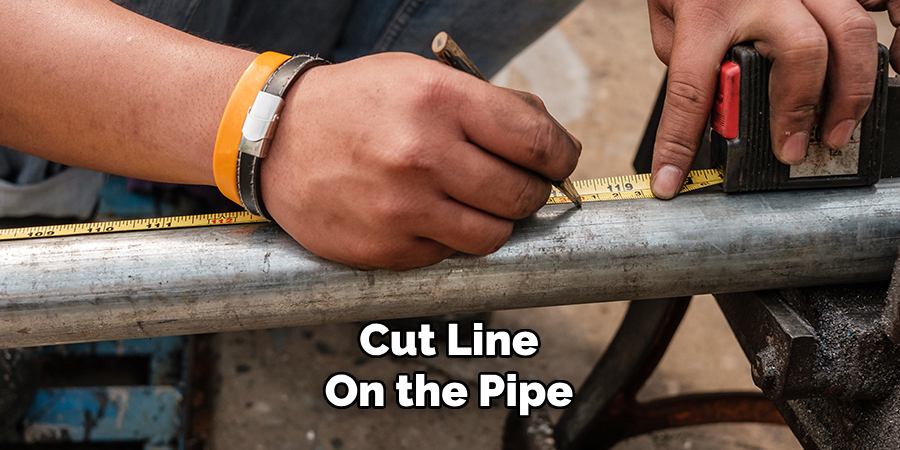
6. Using a Rotary Tool with a Cutting Wheel
A rotary tool fitted with a cutting wheel is another great option for cutting PVC in tight spaces. Its small, precise cutting wheel can easily reach pipes in confined areas. To use, mark the cut line on the pipe, position the cutting wheel against it, and guide the tool steadily along the line. This method is particularly useful for intricate cuts or areas with limited access.
7. Trying a Ratcheting PVC Cutter
Ratcheting PVC cutters are handheld tools that use a ratcheting mechanism to slice through pipes cleanly and effortlessly. Their compact design makes them suitable for tight spaces. Open the jaws of the cutter, position them around the pipe, and squeeze the handles repeatedly to cut through. This method is quick and efficient, though it’s best suited for smaller-diameter pipes.
8. Using a Snap Cutter
Snap cutters are specialized tools for cutting PVC, especially in situations where speed is crucial. They consist of a chain with sharp cutting discs that wrap around the pipe. Once positioned, you apply pressure to snap the pipe cleanly. Snap cutters are effective in tight spaces because they don’t require a lot of clearance around the pipe. This method works particularly well for larger-diameter pipes.
9. Cutting with a Fine-Toothed Hand Saw
A fine-toothed hand saw is a practical option for cutting PVC pipes in tight areas. Its small blade allows for precise cuts, even in confined locations. Mark the pipe where you need to cut, and use short, steady strokes to avoid hitting surrounding objects. This tool requires some manual effort but offers excellent control and accuracy.
10. Using a String or Floss Technique
For extremely tight spaces where tools cannot reach, a simple string or dental floss can be used to cut PVC. Wrap the string or floss around the pipe, holding both ends firmly. Move the string back and forth in a sawing motion, applying steady pressure until the pipe is cut through. While this method takes longer and requires patience, it’s an ingenious solution for very restricted areas.
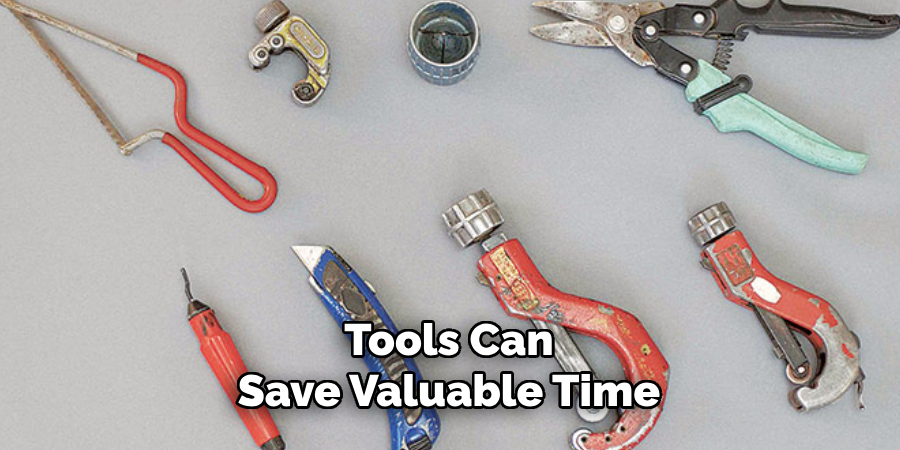
Things to Consider When Cutting PVC Pipes in Tight Spaces
When cutting PVC pipes in tight spaces, there are several factors to keep in mind to ensure a safe, clean, and efficient process. First, assess the available space and select a cutting method or tool that fits the area without risking damage to surrounding objects.
Precision is key, so always mark the pipe accurately before making any cuts. Additionally, consider the thickness and diameter of the pipe, as this will influence the type of tool required for the job.
Safety should also be a top priority. Always wear protective gear, such as gloves and safety goggles, to prevent injuries from flying debris or sharp edges. It’s also essential to secure the pipe to stabilize it during the cutting process, as excessive movement might result in uneven or inaccurate cuts. Lastly, plan for cleanup by having tools handy to remove any PVC shavings or dust to maintain a tidy and functional workspace.
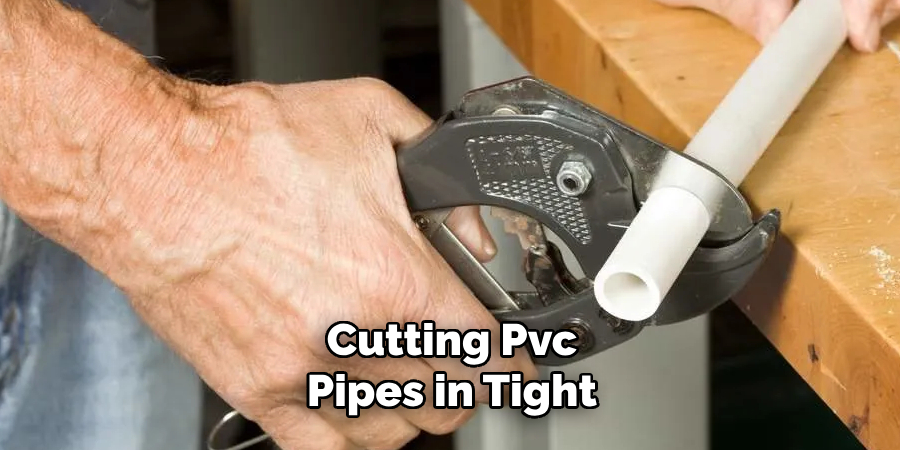
Conclusion
Cutting PVC pipes in tight spaces can be a challenging task, but with the right tools and techniques, it becomes a manageable and efficient process. By carefully assessing the workspace and choosing an appropriate method, you can ensure precise, clean cuts without damaging surrounding structures or compromising safety.
Whether using specialized tools like compact pipe cutters or innovative solutions like the string technique, preparation and patience are key to achieving the best results. Thanks for reading, and we hope this has given you some inspiration on how to cut pvc pipe in tight spaces!

